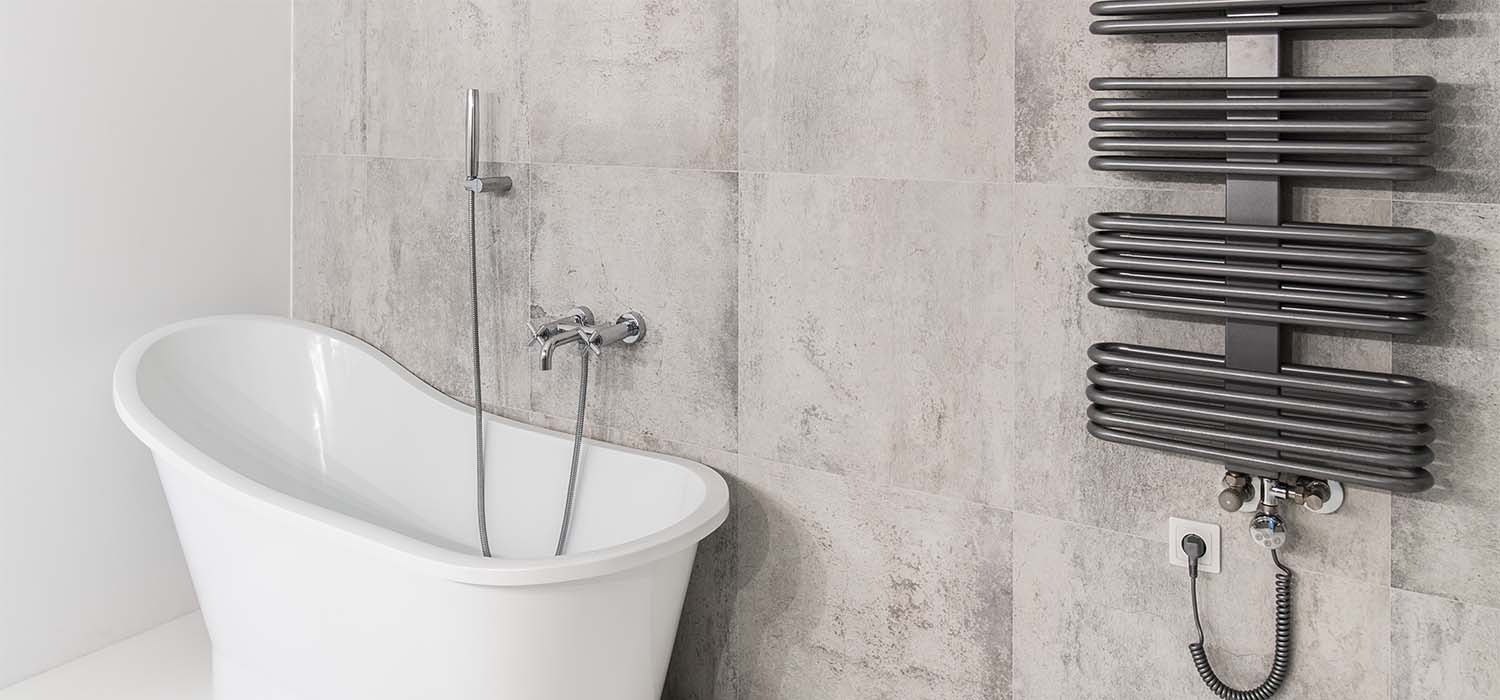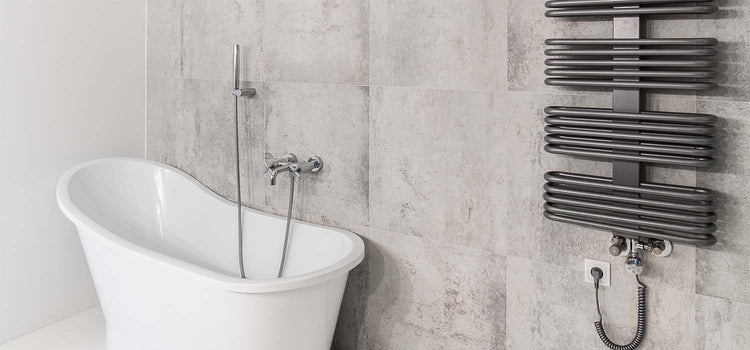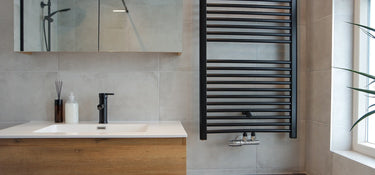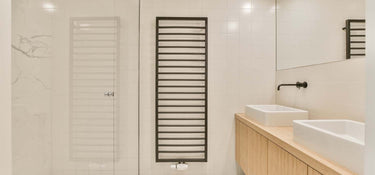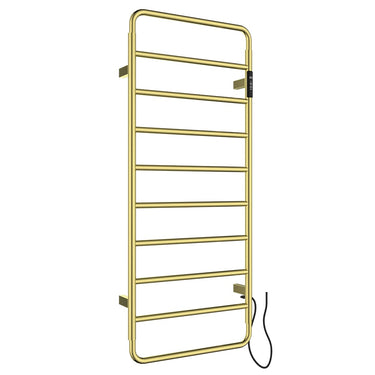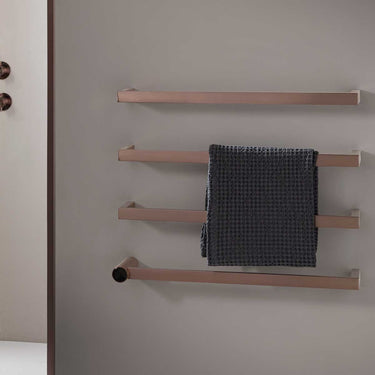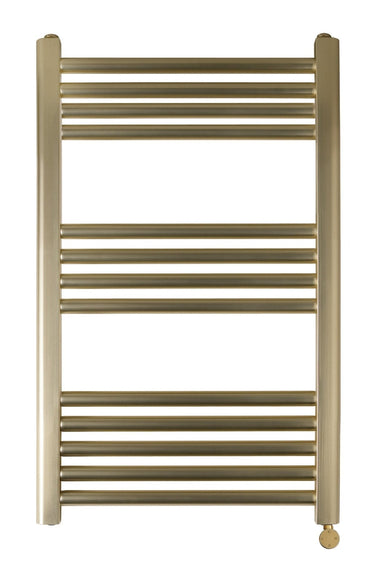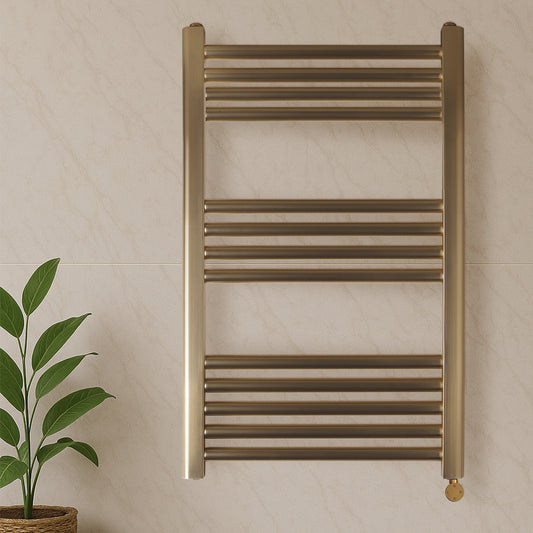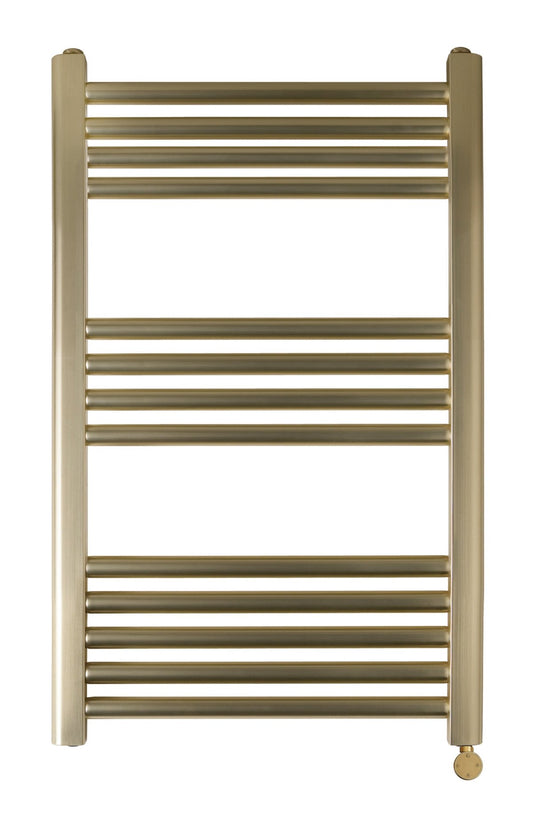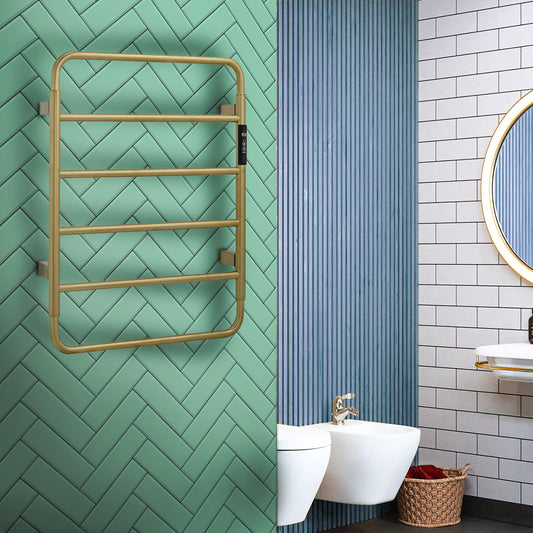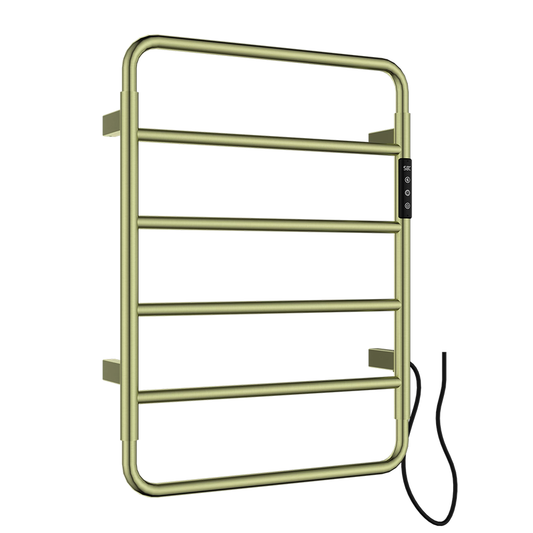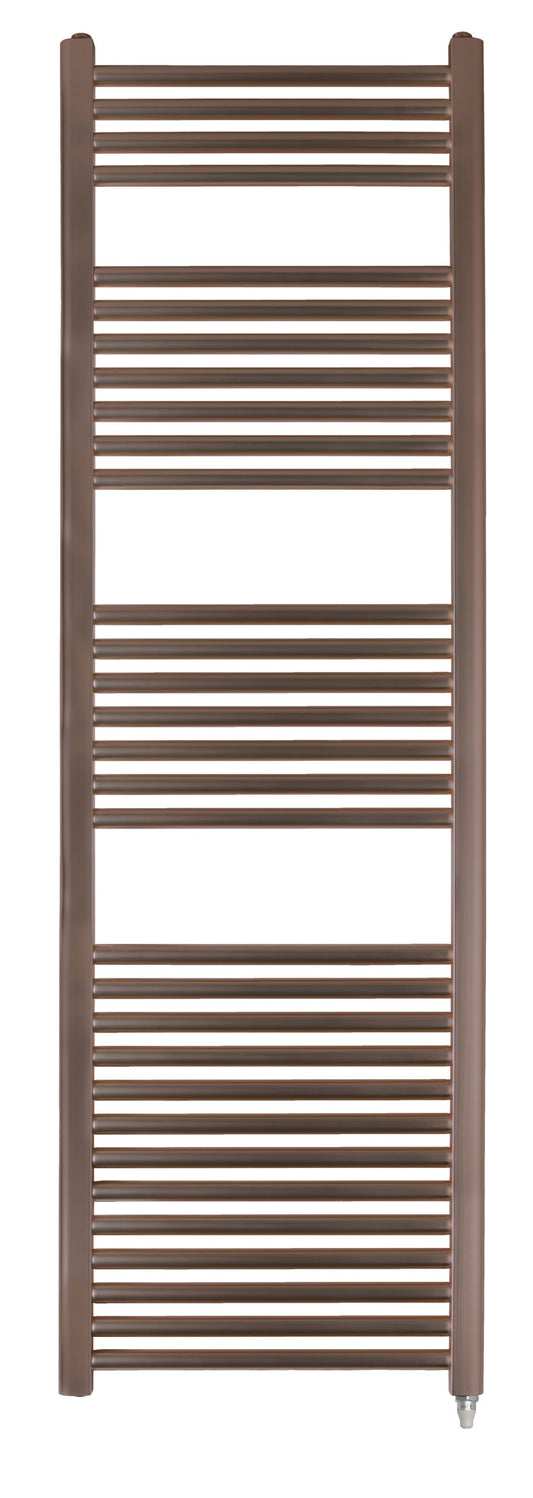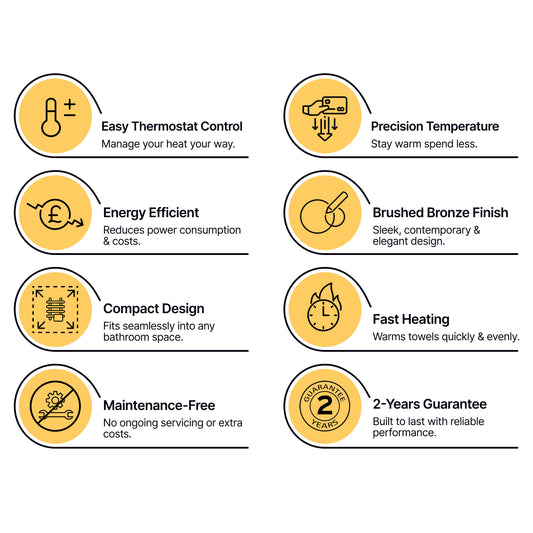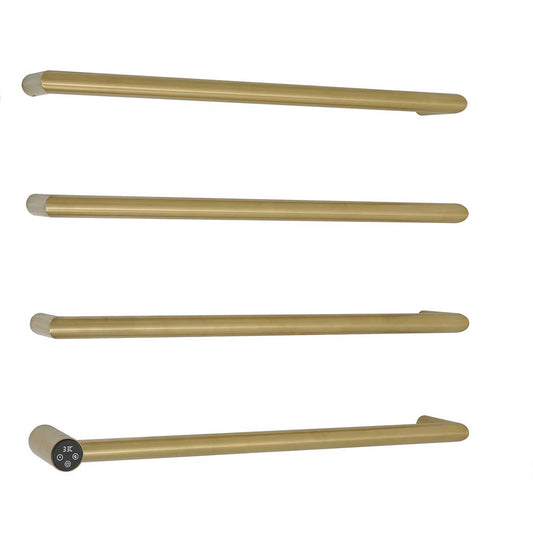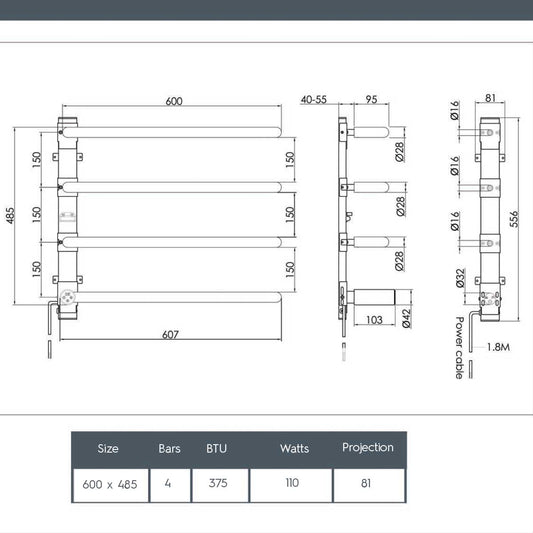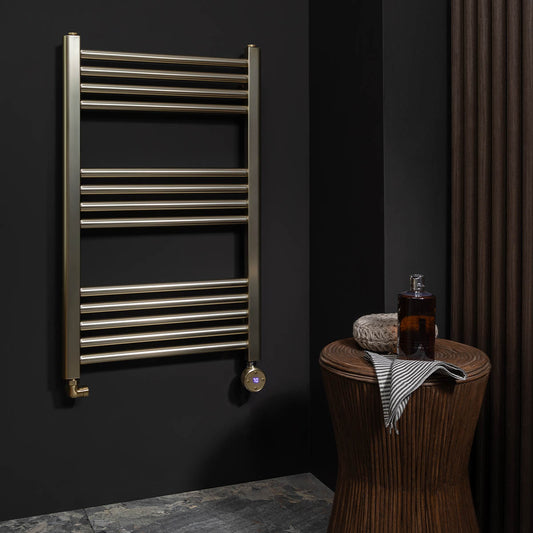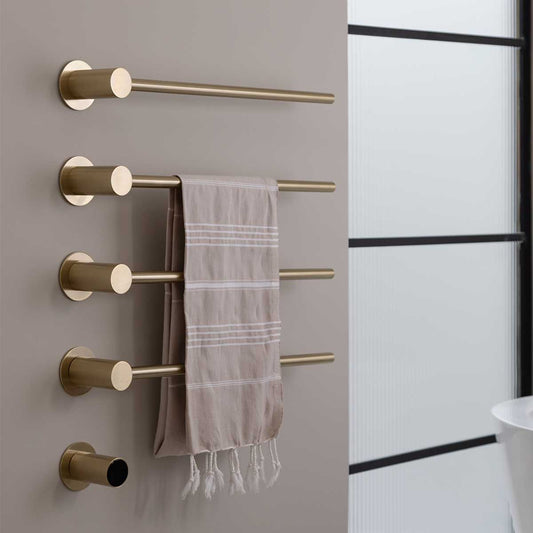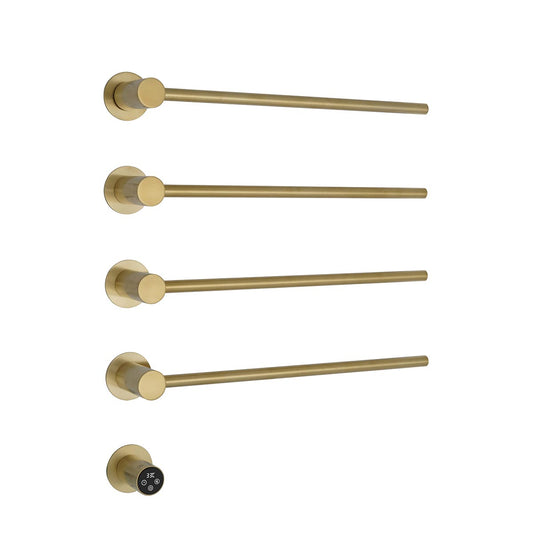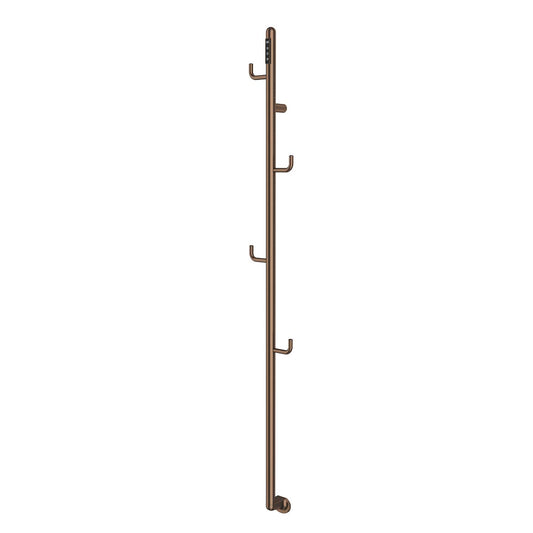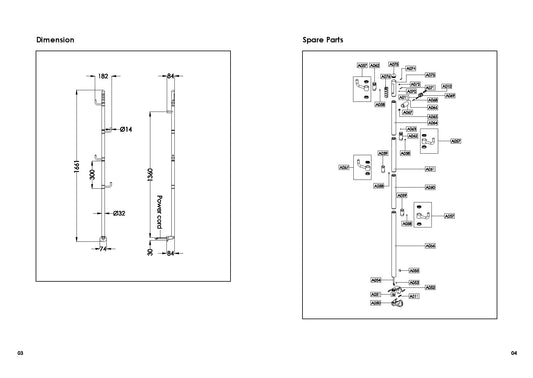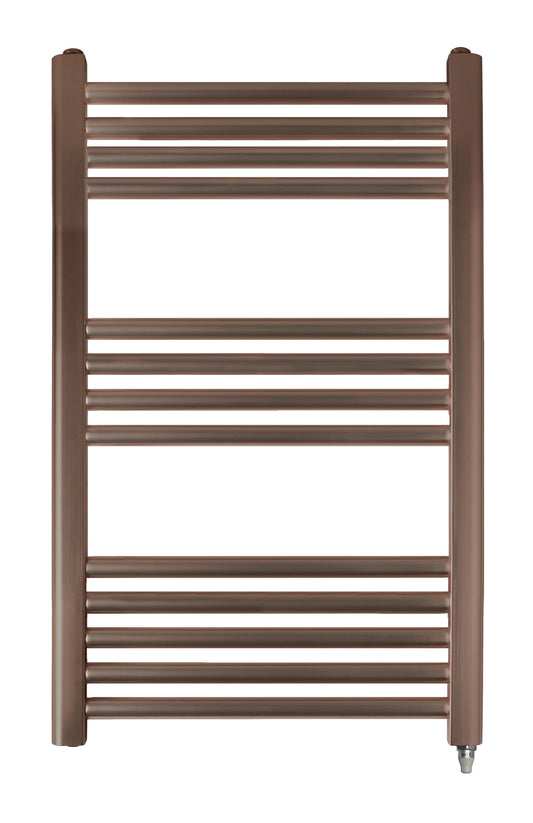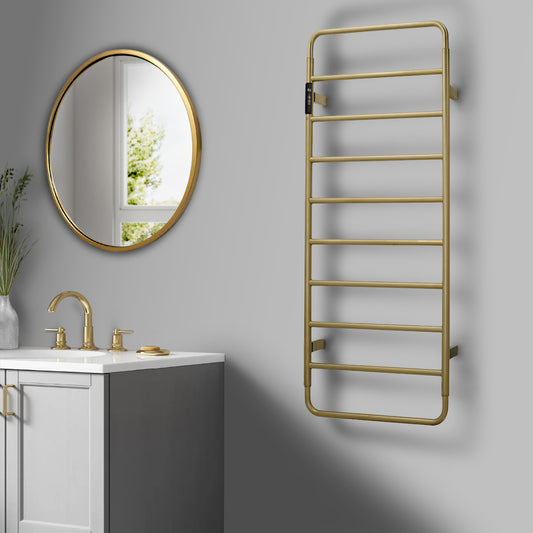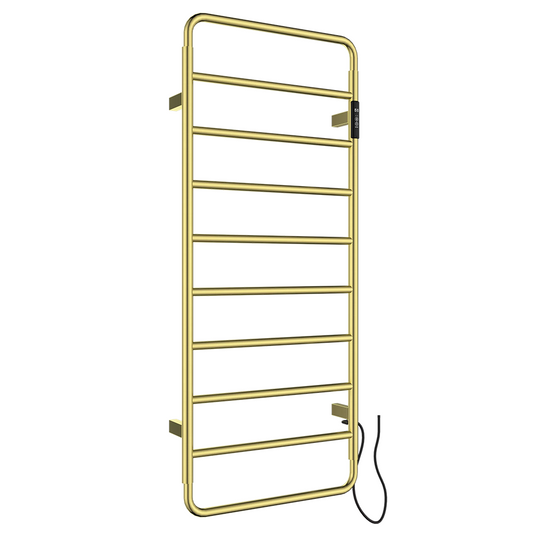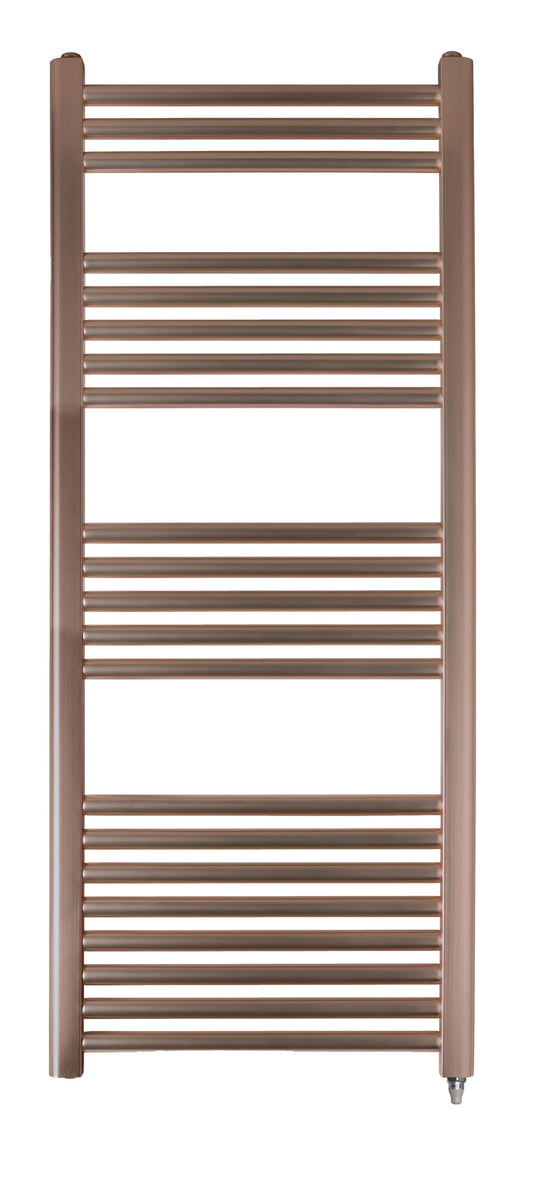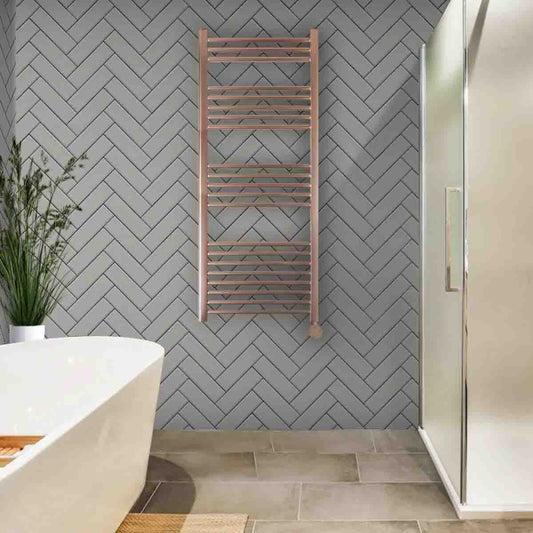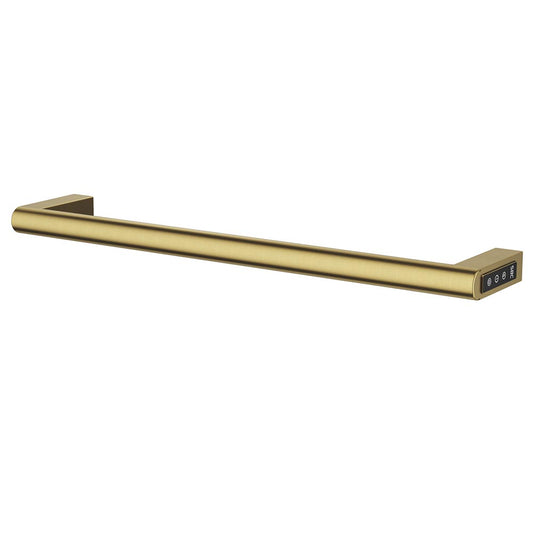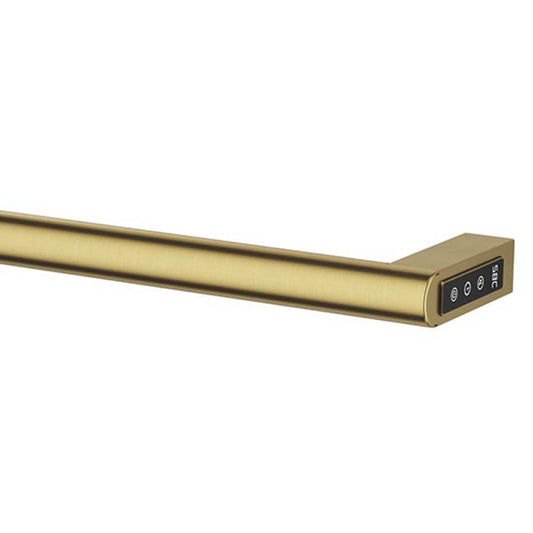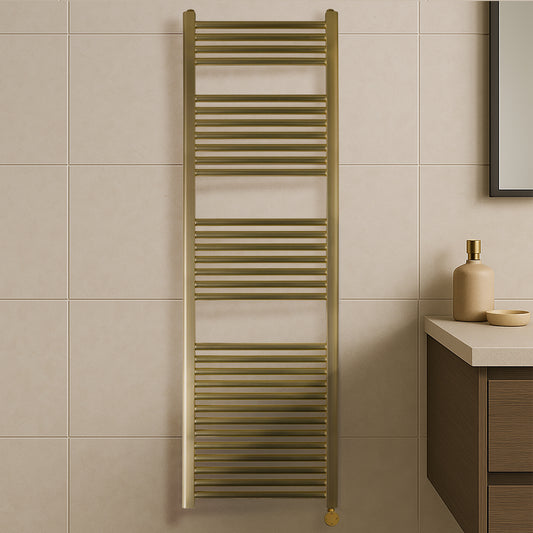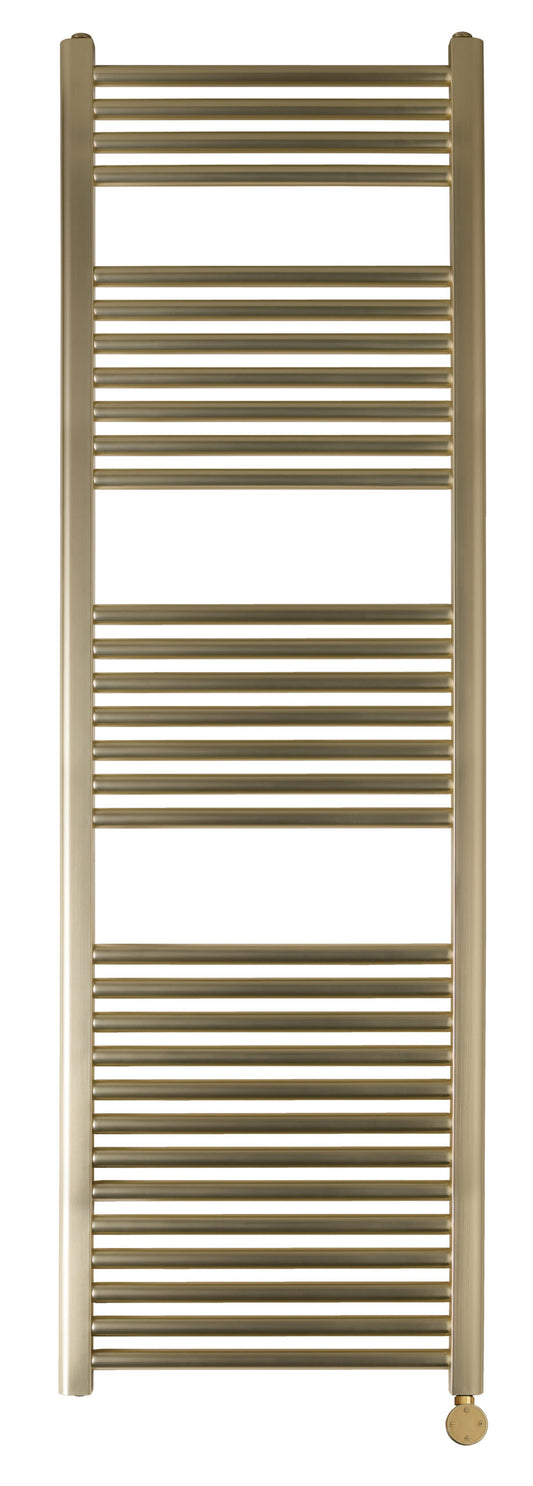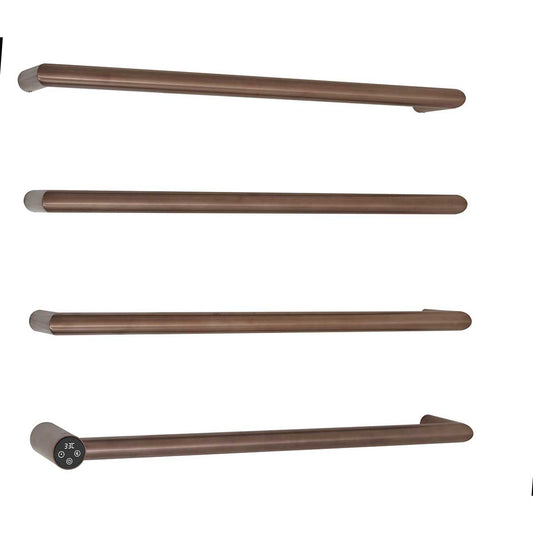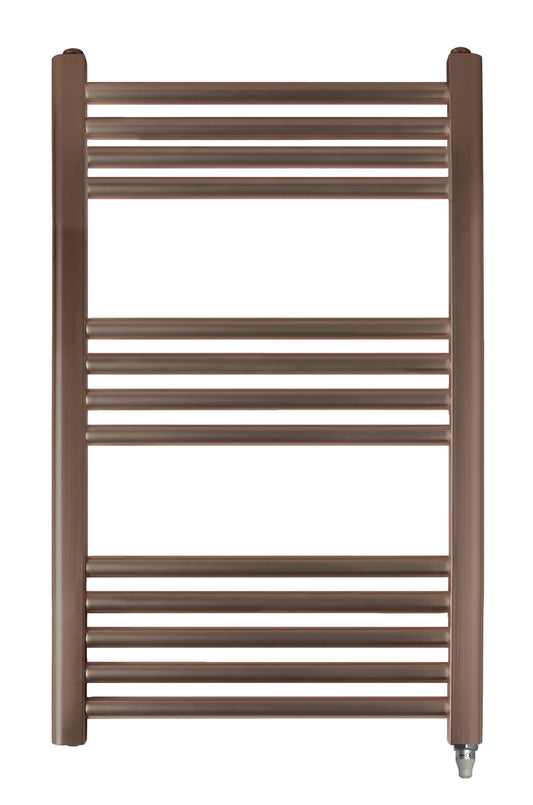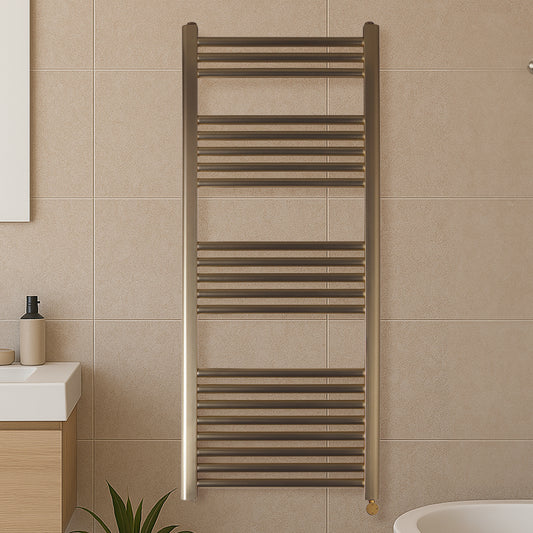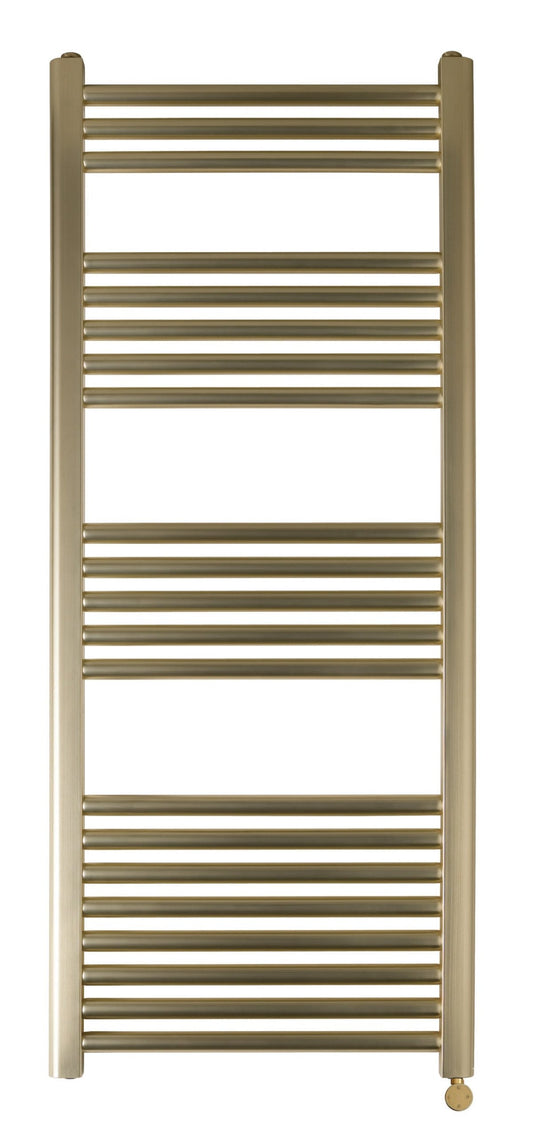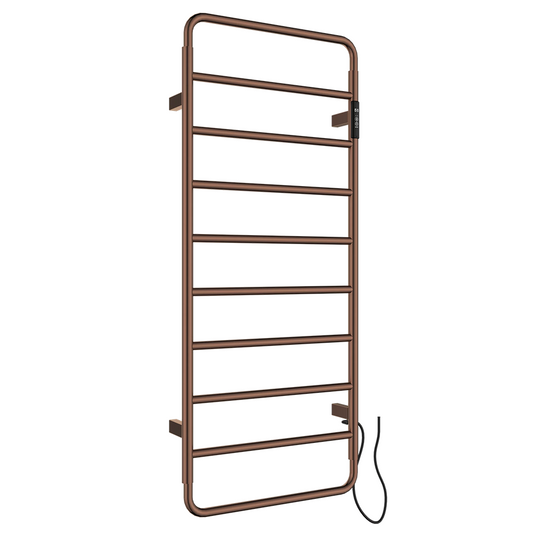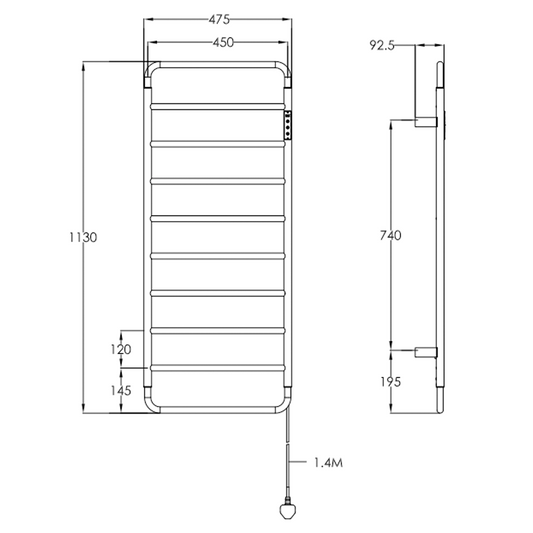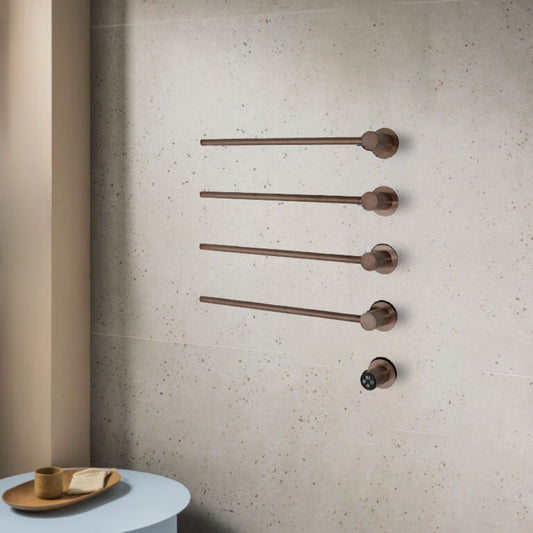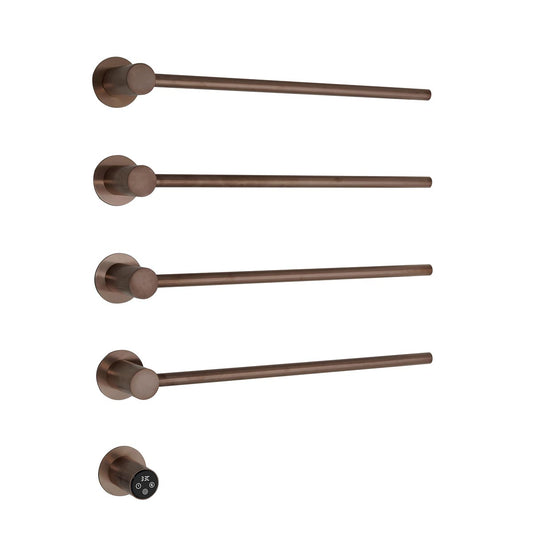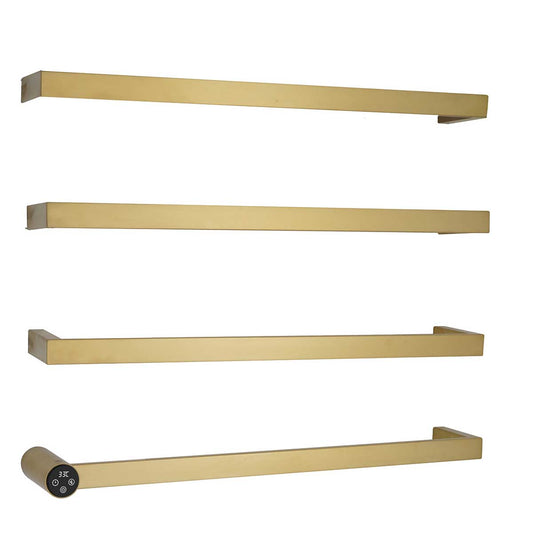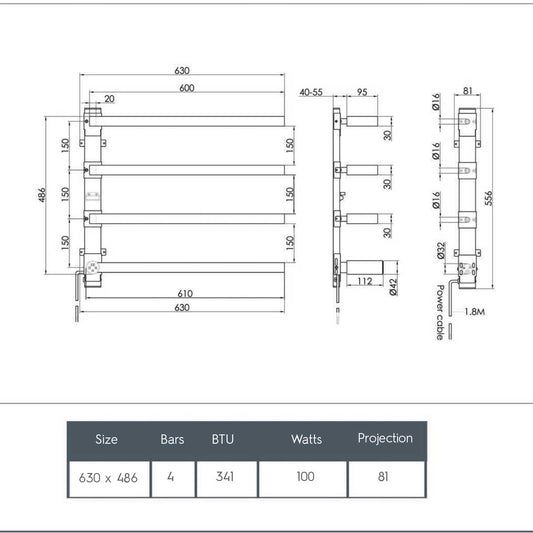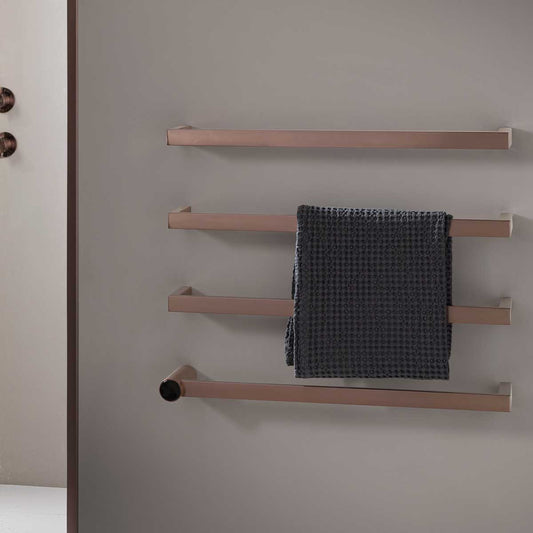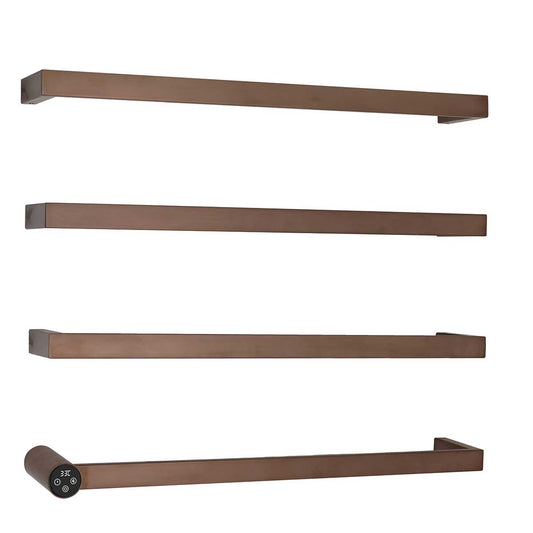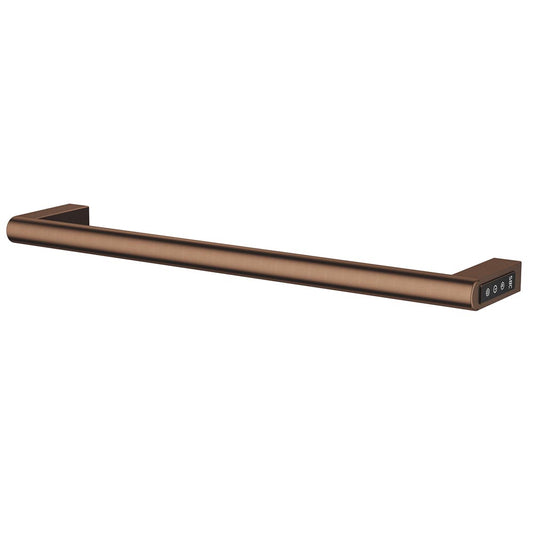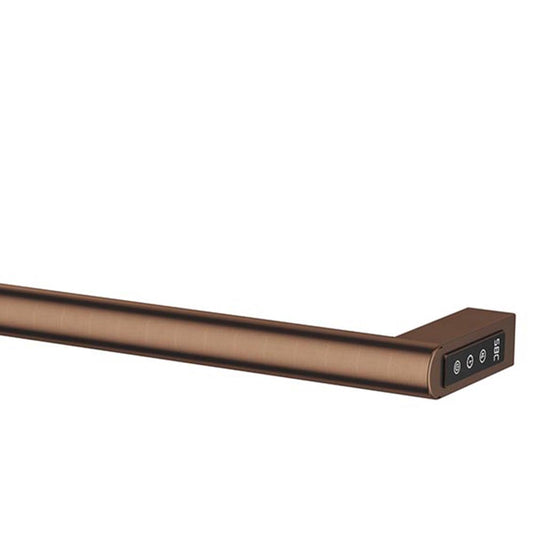Energy-Efficient Electric Towel Radiators: A Smart Heating Solution for Your Bathroom
Table Of Contents:
-
Introduction
→ -
Electric Towel Radiators Collection
→ -
What Makes Electric Towel Radiators Energy-Efficient?
→ -
How to Maximize Energy Efficiency with Your Electric Towel Radiator
→ -
Benefits of Energy-Efficient Electric Towel Radiators
→ -
How Much Energy Does an Electric Towel Radiator Use?
→ -
Estimating the Cost of Running Your Electric Towel Radiator
→ -
Conclusion
→ -
FAQs
→
Introduction
Electric towel radiators are a practical and stylish way to warm your bathroom while drying your towels quickly. They not only add a touch of luxury but also provide an efficient means of heating your bathroom during chilly mornings or evenings. However, as with all electrical appliances, it's important to consider their energy consumption, especially in terms of long-term cost-effectiveness and environmental impact. Energy-efficient electric towel radiators are a perfect blend of performance and eco-friendliness, ensuring you stay comfortable without breaking the bank. In this blog, we’ll explore the key features of energy-efficient towel radiators, how to maximize their performance, and how much energy they consume.
What Makes Electric Towel Radiators Energy-Efficient?
Electric towel radiators are designed not only to warm your towels but also to provide efficient heating for your bathroom without consuming excessive amounts of electricity. To ensure that they are energy-efficient, these radiators are built with several key features that minimize energy waste and enhance performance. Here's what makes electric towel radiators energy-efficient:
1. Smart Thermostats
One of the primary features that contribute to the energy efficiency of electric towel radiators is the inclusion of smart thermostats. These thermostats allow you to set the radiator to your desired temperature and maintain it without unnecessary fluctuations. By automatically adjusting the temperature, they ensure the radiator only consumes energy when it's needed, avoiding continuous heating that wastes energy.
-
Benefit: The thermostat ensures the radiator runs only when necessary, preventing overheating and reducing energy use.
2. Timers and Scheduling
Energy-efficient models often come equipped with timers and scheduling options. With these features, you can set the radiator to turn on or off at specific times, such as before you wake up or after you’ve used the bathroom. This ensures that the radiator is only running when required, further minimizing energy waste.
-
Benefit: Timers and schedules reduce the risk of leaving the radiator on unnecessarily, conserving electricity and lowering your energy bill.
3. Fluid-Filled Heating Systems
Many energy-efficient electric towel radiators use fluid-filled systems. These radiators feature a heat-retaining fluid that circulates inside the radiator, providing consistent and gradual heat. After the unit is switched off, the fluid continues to release heat, allowing the bathroom to stay warm without the need for constant operation.
-
Benefit: Fluid-filled models maintain warmth for longer, reducing the need for the radiator to stay on for extended periods.
4. High-Quality Insulation
Energy-efficient towel radiators are made with high-quality materials that offer excellent heat retention, such as stainless steel or aluminum. This insulation keeps the heat within the radiator for longer, reducing the amount of energy required to maintain a comfortable temperature.
-
Benefit: Well-insulated radiators use less energy to maintain warmth and prevent heat loss, improving energy efficiency.
5. Adjustable Heat Settings
Some models feature multiple heat settings, which allow you to customize the level of heat according to your specific needs. Lower heat settings can be used for milder warmth, reducing energy consumption without sacrificing comfort.
-
Benefit: Adjustable heat settings ensure that you're using just the right amount of energy for the level of warmth you desire.
Electric towel radiators are energy-efficient because they use smart thermostats, timers, fluid-filled systems, and quality insulation to minimize energy use while providing consistent heat. By incorporating these features, these radiators help you save on electricity bills, reduce energy consumption, and maintain a comfortable bathroom environment with minimal environmental impact.

How to Maximize Energy Efficiency with Your Electric Towel Radiator
Maximizing the energy efficiency of your electric towel radiator not only helps reduce energy consumption but also ensures that you get the best performance without unnecessarily increasing your electricity bills. Here are some practical tips to help you optimize the energy use of your electric towel radiator:
1. Set the Right Temperature
Using the thermostat, adjust your radiator to a comfortable but not excessive temperature. A typical setting between 18-21°C (64-70°F) is ideal for most bathrooms. Setting the temperature too high will waste energy and increase your electricity costs, while setting it too low may not effectively warm your bathroom or towels.
-
Tip: Avoid setting the temperature higher than necessary. A moderate setting will keep your space comfortable while using less energy.
2. Use the Timer and Scheduling Features
Take advantage of the timer and scheduling functions available on many electric towel radiators. By programming your radiator to heat up just before you need it—like during your morning routine or before using the bathroom in the evening—you ensure that it’s not running when it’s not needed.
-
Tip: Set the radiator to turn on 20-30 minutes before you plan to use the bathroom. This way, your towels will be warm when you need them, without wasting energy throughout the day.
3. Clean and Maintain the Radiator
Regular maintenance can improve the efficiency of your electric towel radiator. Dust, dirt, and debris can build up on the radiator’s surface, which affects heat transfer and can cause the unit to work harder than necessary. Cleaning your radiator regularly helps it operate efficiently.
-
Tip: Wipe down the radiator with a soft cloth every couple of weeks to prevent dust accumulation. Also, check for any obstructions or blockages that might restrict airflow.
4. Keep Doors and Windows Closed
When using your electric towel radiator, keep bathroom doors and windows closed to avoid heat loss. Opening windows or leaving doors ajar can allow the warm air to escape, forcing the radiator to use more energy to maintain the desired temperature.
-
Tip: Close doors and windows when your radiator is on to keep the heat inside and improve energy efficiency.
5. Install Proper Insulation
Proper insulation around your bathroom, including walls and windows, helps prevent heat from escaping. If your bathroom is poorly insulated, your radiator will need to work harder to maintain warmth, consuming more energy. If necessary, invest in better insulation for more long-term energy savings.
-
Tip: Consider adding thermal window coverings or ensuring your bathroom is properly sealed to prevent heat from escaping.
6. Opt for Fluid-Filled or High-Quality Models
If you have a choice, opt for a fluid-filled electric towel radiator or one with high-quality materials that retain heat longer. These models continue to radiate warmth even after the radiator is turned off, which reduces the need for constant operation.
-
Tip: Fluid-filled models, while slightly more expensive upfront, can be more energy-efficient in the long run due to their ability to retain heat for hours after being turned off.
7. Avoid Overloading the Radiator
While it’s tempting to stack several towels on the radiator to get them all heated at once, overloading the unit can reduce its ability to heat efficiently. For the best results, place only the number of towels the radiator is designed to handle for optimal heat distribution.
-
Tip: If you have multiple towels to dry, rotate them occasionally for even heating, or use a larger radiator model designed to handle more towels.
By following these tips, you can maximize the energy efficiency of your electric towel radiator, enjoy a warm bathroom, and save on energy costs. Regular maintenance, using smart features like timers, and choosing the right model can make a significant difference in both your comfort and your wallet.
Benefits of Energy-Efficient Electric Towel Radiators
Energy-efficient electric towel radiators offer a range of advantages that make them an excellent choice for homeowners looking to combine comfort, cost savings, and environmental responsibility. Here are some of the key benefits:

1. Lower Energy Bills
The primary advantage of energy-efficient electric towel radiators is their ability to reduce electricity consumption. These radiators are designed to use less energy while providing the same level of warmth and functionality. Features such as smart thermostats, timers, and fluid-filled designs help prevent unnecessary heating, ensuring that the radiator only consumes energy when it's needed.
-
Benefit: You’ll see a noticeable decrease in your energy bills since the radiator won’t be running constantly or wasting energy.
2. Environmental Sustainability
Energy-efficient models consume less electricity, which means you are contributing to a reduction in your household’s overall carbon footprint. By using less energy, these radiators help lower greenhouse gas emissions associated with electricity generation, making them an eco-friendly choice for those looking to minimize their environmental impact.
-
Benefit: Opting for an energy-efficient radiator is an environmentally conscious decision that helps conserve natural resources.
3. Consistent Comfort
Energy-efficient electric towel radiators provide consistent and comfortable heat. Features like smart thermostats and high-quality insulation ensure that your bathroom remains warm without fluctuating temperatures. This consistency enhances comfort, particularly on cold mornings when you need the bathroom to be comfortably heated.
-
Benefit: With consistent warmth, you’ll enjoy a cozy and comfortable bathroom experience every time you use it.
4. Long-Term Durability
Many energy-efficient electric towel radiators are built with durable, high-quality materials that last longer and require less maintenance. Because they use less power to operate, they put less strain on their internal components, contributing to a longer lifespan. This means fewer repairs and replacements, saving you money in the long run.
-
Benefit: A well-made, energy-efficient model offers durability and long-term reliability, meaning fewer repairs and replacements over the years.
5. Eco-Friendly Design Features
Energy-efficient towel radiators often include design elements like fluid-filled systems, which retain and distribute heat more effectively. These systems use a special heat-retaining fluid to store warmth, allowing the radiator to maintain a comfortable temperature without the need for continuous operation. Additionally, these radiators can be equipped with timers, automatic shut-off features, and remote control apps to further optimize energy use.
-
Benefit: These innovative design features ensure that the radiator operates in the most energy-efficient way possible, enhancing both comfort and savings.
6. Enhanced Heating Performance
Efficient heat distribution ensures that your towels dry faster and your bathroom stays warmer for longer. This can be especially helpful in colder climates or during the winter months. By reducing the need for excessive heating, the radiator’s design allows it to maintain a comfortable environment without excessive energy use.
-
Benefit: You get quicker towel drying times and a more comfortable bathroom environment, all while saving energy.
7. Low Maintenance
Energy-efficient models often require less maintenance than traditional radiators. Because they use less power and have features designed to optimize performance, there’s less wear and tear on the system. Regular cleaning and occasional checks for leaks or wear on the electrical components are generally all that’s needed to keep the unit running smoothly.
-
Benefit: Lower maintenance requirements mean less time spent on upkeep and more time enjoying the benefits of your radiator.
Energy-efficient electric towel radiators offer a range of benefits, including cost savings, improved environmental impact, and reliable comfort. By choosing an energy-efficient model, you not only invest in a long-lasting and effective bathroom heating solution, but you also contribute to a greener, more sustainable future.

How Much Energy Does an Electric Towel Radiator Use?
The amount of energy an electric towel radiator consumes depends on several factors, including its wattage, usage duration, and efficiency. Understanding how much energy your electric towel radiator uses can help you manage your electricity consumption and better estimate your heating costs.
Power Rating and Energy Consumption
Electric towel radiators are typically rated in watts (W), and this power rating indicates how much electricity the radiator uses when it is operating. The energy consumed by the radiator can be calculated using the following formula:
Energy Consumption (in kWh) = Power Rating (in kW) × Time Used (in hours)
For example, a radiator with a power rating of 1000 watts (or 1 kilowatt) will consume 1 kWh of energy for each hour it is in operation. To help you understand better, here’s an overview of typical power ratings and their energy consumption:
-
500W (0.5 kW): Consumes 0.5 kWh per hour.
-
1000W (1 kW): Consumes 1 kWh per hour.
-
1500W (1.5 kW): Consumes 1.5 kWh per hour.
Example Calculation of Energy Consumption
Let’s assume you have a 1000W electric towel radiator, and you run it for 3 hours every day:
-
Power Rating: 1000W = 1 kW
-
Time Used: 3 hours per day
Energy Consumption per Day = 1 kW × 3 hours = 3 kWh per day.
If you run this radiator every day for 30 days, the total monthly energy consumption would be:
3 kWh per day × 30 days = 90 kWh per month.
To estimate the cost, multiply the total energy consumption by your electricity rate (let’s assume it’s £0.20 per kWh):
90 kWh × £0.20 = £18 per month.
This gives you an idea of how much it might cost to run your electric towel radiator each month.
The energy consumed by an electric towel radiator depends on its power rating, how long it runs each day, and how efficiently it operates. By understanding the energy consumption of your radiator and adjusting your usage habits, you can control energy costs and enjoy a warm bathroom without unnecessary energy waste.
Estimating the Cost of Running Your Electric Towel Radiator
To estimate the cost of running your electric towel radiator, it's essential to consider the power consumption, the number of hours it operates, and your electricity rate. With this information, you can calculate the total energy usage and determine how much it will cost you each day, month, or year to operate the radiator.
Here's a step-by-step guide to help you calculate the cost of running your electric towel radiator:
Step 1: Calculate the Energy Consumption
The first step in estimating the cost is to determine how much energy your electric towel radiator uses. The energy consumption is typically measured in kilowatt-hours (kWh).
Formula for Energy Consumption:
Energy Consumption (in kWh) = Power Rating (in kW) × Time Used (in hours)
-
Power Rating: This is the wattage of your radiator, typically listed on the product label (e.g., 500W, 1000W, or 1500W). Remember, 1,000W = 1kW.
-
Time Used: This is how long you leave the radiator on each day.
For example, if you have a 1000W radiator (1 kW) and use it for 3 hours each day, the energy consumption will be:
-
Energy Consumption (in kWh) = 1 kW × 3 hours = 3 kWh per day.
Step 2: Determine the Cost of Energy
Once you know how much energy the radiator uses, the next step is to calculate the cost based on your local electricity rate. Electricity costs can vary depending on where you live, but the average price in the UK is around £0.20 per kWh.
Formula for Energy Cost:
Energy Cost (in £) = Energy Consumption (in kWh) × Electricity Rate (per kWh)
Let’s assume your radiator uses 3 kWh per day and your electricity rate is £0.20 per kWh:
-
Energy Cost per Day = 3 kWh × £0.20 = £0.60 per day.
Step 3: Calculate Monthly and Annual Running Costs
Now that you have the daily cost, you can easily estimate the monthly and annual costs of running your electric towel radiator.
Monthly Cost:
To calculate the monthly cost, multiply the daily cost by the number of days in the month (typically 30):
-
Monthly Cost = £0.60 per day × 30 days = £18 per month.
Annual Cost:
For the annual cost, multiply the monthly cost by 12:
-
Annual Cost = £18 per month × 12 months = £216 per year.
Example Calculation for Different Radiator Sizes
Here’s an example for different radiator wattages to help you understand how the costs change with varying power ratings.
-
500W (0.5 kW) Radiator:
-
Energy Consumption: 0.5 kW × 3 hours = 1.5 kWh per day
-
Daily Cost: 1.5 kWh × £0.20 = £0.30 per day
-
Monthly Cost: £0.30 × 30 = £9 per month
-
Annual Cost: £9 × 12 = £108 per year
-
1000W (1 kW) Radiator:
-
Energy Consumption: 1 kW × 3 hours = 3 kWh per day
-
Daily Cost: 3 kWh × £0.20 = £0.60 per day
-
Monthly Cost: £0.60 × 30 = £18 per month
-
Annual Cost: £18 × 12 = £216 per year
-
1500W (1.5 kW) Radiator:
-
Energy Consumption: 1.5 kW × 3 hours = 4.5 kWh per day
-
Daily Cost: 4.5 kWh × £0.20 = £0.90 per day
-
Monthly Cost: £0.90 × 30 = £27 per month
-
Annual Cost: £27 × 12 = £324 per year
Estimating the cost of running your electric towel radiator involves understanding its power rating, calculating how much energy it uses, and multiplying it by your local electricity rate. By following these simple steps, you can accurately gauge how much it will cost to operate your radiator and take steps to optimize energy usage. Whether you're using it for a few hours daily or periodically, these calculations allow you to manage your energy consumption and keep your bathroom cozy without breaking the bank.
Conclusion
Energy-efficient electric towel radiators provide an excellent balance of comfort, convenience, and cost savings. With advanced features like smart thermostats, timers, and energy-retaining designs, these radiators heat your bathroom effectively without wasting energy. Whether you’re looking to reduce your environmental impact or lower your electricity bills, investing in an energy-efficient towel radiator is a smart choice that brings both immediate and long-term benefits.
Frequently Asked Questions
The energy consumption depends on the radiator's wattage. A 500W radiator uses approximately 0.5 kWh per hour of use. A 1000W radiator uses 1 kWh per hour.
To maximize energy efficiency, use a thermostat to set the temperature, schedule it with a timer, clean it regularly, and ensure proper installation away from drafts.
Yes, using an energy-efficient model helps reduce electricity consumption, lowering your energy bills. Timers and thermostats ensure the radiator operates only when needed.
Yes, they are environmentally friendly as they consume less energy, which reduces your carbon footprint. Choosing energy-efficient models further minimizes the impact on the environment.
With proper care and maintenance, energy-efficient towel radiators can last for many years, providing a durable and reliable heating solution.


